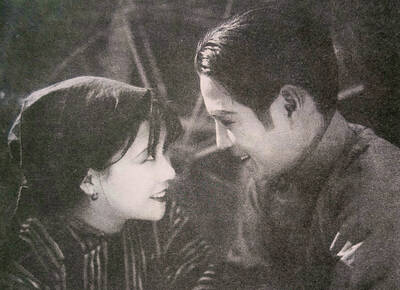The cult success of the Chilean novelist Roberto Bolano’s The Savage Detectives and the immense worldwide posthumous success of his final novel, 2666, have encouraged his British publishers to delve into his substantial backlist. There are lots of interesting things there, most marked by the formal eccentricity that so defined 2666.
By Night in Chile is told in two paragraphs, the second only a few words long. Distant Star, the most engaging of these earlier works, is a magic realist-tinged narrative of Pinochet’s regime, containing a fascist poet who writes his work in vapor trails in the sky. Nazi Literature in the Americas is a real curiosity; it has a surface simplicity, but few readers will be able to pin down a general unease about the book’s purpose and meaning. It was published more or less simultaneously with Distant Star, in 1996, and its last story — or entry — contains a short version of that novel.
It is structured as a sort of dictionary, with 30 or so short lives of imaginary writers. They are all related, in different ways, to often extremely right-wing causes. They pay a pilgrimage to visit Hitler or are photographed in childhood being dandled on the Fuhrer’s knee. They promote anti-Semitic ideology among beat poets. They flee to South America after the war and live in enclosed Teutonic colonies. “Five feet [1.52m] tall [and] with a swarthy complexion” themselves, they write books with characters exclusively “tall, fair-haired and blue-eyed”. They come to violent ends, either in the past or considerably in the future; their books are acclaimed within certain circles, or self-published and never noticed; they deal with each other in dense webs of literary association.
In description, Nazi Literature in the Americas sounds like satire, and it has a dryness about it that could easily be taken for ironic humor. In fact, Bolano’s intentions are more sophisticated than that. Much of his personal experience was with writers passionately committed to extreme leftist causes, ceaselessly arguing about ideological purity in poetry and splitting up into smaller and smaller “groupuscules”. (All this is described in The Savage Detectives.)
Nazi Literature in the Americas takes what Bolano knew very well, and sends it through the looking glass of the ideological divide. He imagines writers of extraordinary experimental verve, engaging with the most advanced literary theory. Some of them, indeed, sound a little like Bolano in 2666, a novel as steeped in the excitements of brutal violence as any writer described here.
Other of these imaginary figures are naive science-fiction writers, or the creators of adventure stories, or, in the case of Argentino Schiaffino, the poet of myth and epic for the thugs of the football terraces. In short, Bolano’s imaginary writers cover the same breadth of ground as any selection of writers. Bolano, with his characteristic entranced fascination of tone, trembles on the verge of suggesting that some of them may have been terrible, but there is no reason to suppose others are not capable of greatness.
This is a heretical thought, but the ideological basis of writing has never had much to do with its merits; a novelist is not more or less likely to be a good novelist because he approves or disapproves of Pinochet, Bill Clinton, Stalin, Mao or Margaret Thatcher. In its unexpected and committedly affectless manner, Nazi Literature in the Americas testifies to the sheer power of literature; how it can emerge in an artless or sophisticated manner with a power that we would prefer to direct.
There was never any reason to think that the writers of literature were likely to be exclusively nice people. Only the most foolish reader ever considered that literature was something one would be at all likely to agree with. Bolano’s impressive novel triumphs by displaying a power of imagination and a quiddity we are not inclined to allow any of his imaginary writers. It also, magnanimously, suggests that they too might be capable of writing a poem in the sky, whatever they did when they came back down to earth.

Taiwanese chip-making giant Taiwan Semiconductor Manufacturing Co (TSMC) plans to invest a whopping US$100 billion in the US, after US President Donald Trump threatened to slap tariffs on overseas-made chips. TSMC is the world’s biggest maker of the critical technology that has become the lifeblood of the global economy. This week’s announcement takes the total amount TSMC has pledged to invest in the US to US$165 billion, which the company says is the “largest single foreign direct investment in US history.” It follows Trump’s accusations that Taiwan stole the US chip industry and his threats to impose tariffs of up to 100 percent

On a hillside overlooking Taichung are the remains of a village that never was. Half-formed houses abandoned by investors are slowly succumbing to the elements. Empty, save for the occasional explorer. Taiwan is full of these places. Factories, malls, hospitals, amusement parks, breweries, housing — all facing an unplanned but inevitable obsolescence. Urbex, short for urban exploration, is the practice of exploring and often photographing abandoned and derelict buildings. Many urban explorers choose not to disclose the locations of the sites, as a way of preserving the structures and preventing vandalism or looting. For artist and professor at NTNU and Taipei

March 10 to March 16 Although it failed to become popular, March of the Black Cats (烏貓進行曲) was the first Taiwanese record to have “pop song” printed on the label. Released in March 1929 under Eagle Records, a subsidiary of the Japanese-owned Columbia Records, the Hoklo (commonly known as Taiwanese) lyrics followed the traditional seven characters per verse of Taiwanese opera, but the instrumentation was Western, performed by Eagle’s in-house orchestra. The singer was entertainer Chiu-chan (秋蟾). In fact, a cover of a Xiamen folk song by Chiu-chan released around the same time, Plum Widow Missing Her Husband (雪梅思君), enjoyed more

Last week Elbridge Colby, US President Donald Trump’s nominee for under secretary of defense for policy, a key advisory position, said in his Senate confirmation hearing that Taiwan defense spending should be 10 percent of GDP “at least something in that ballpark, really focused on their defense.” He added: “So we need to properly incentivize them.” Much commentary focused on the 10 percent figure, and rightly so. Colby is not wrong in one respect — Taiwan does need to spend more. But the steady escalation in the proportion of GDP from 3 percent to 5 percent to 10 percent that advocates